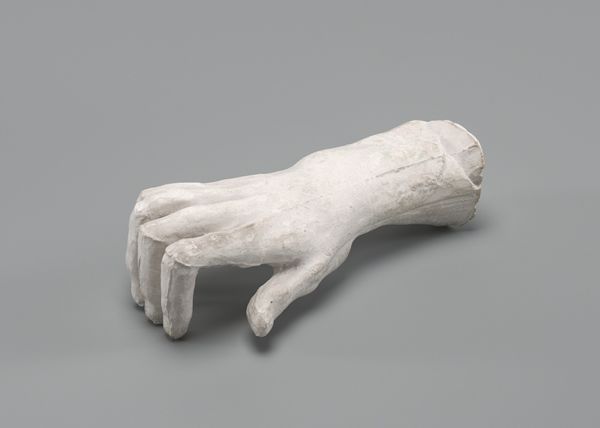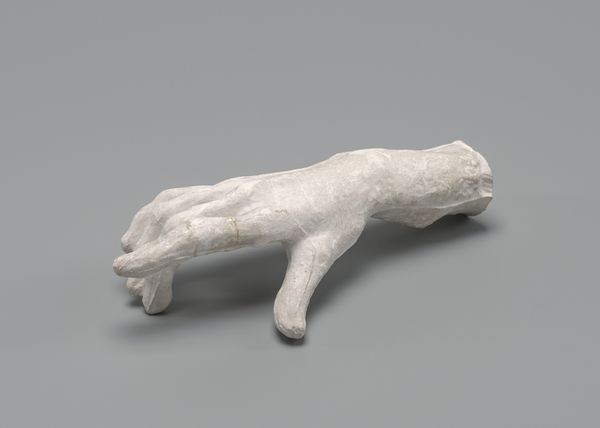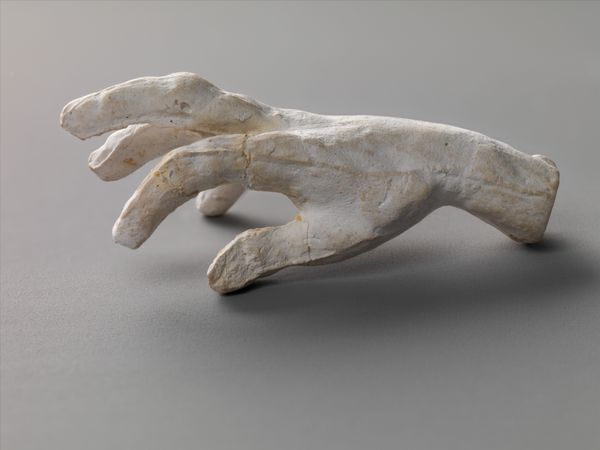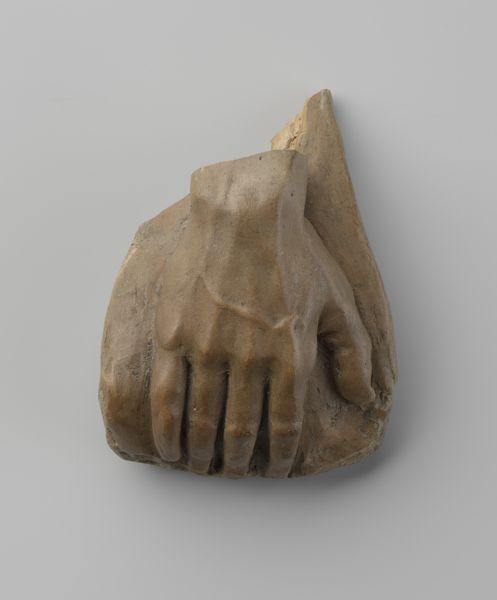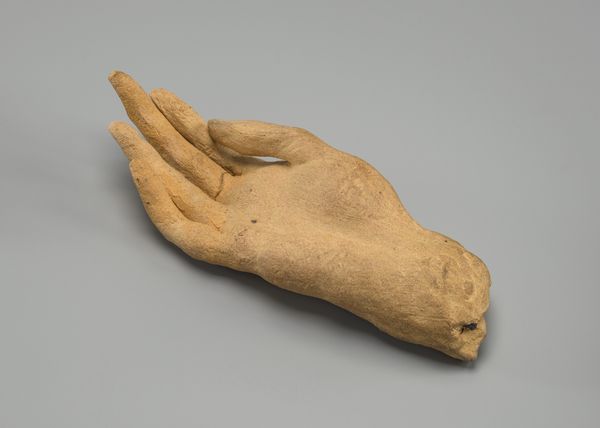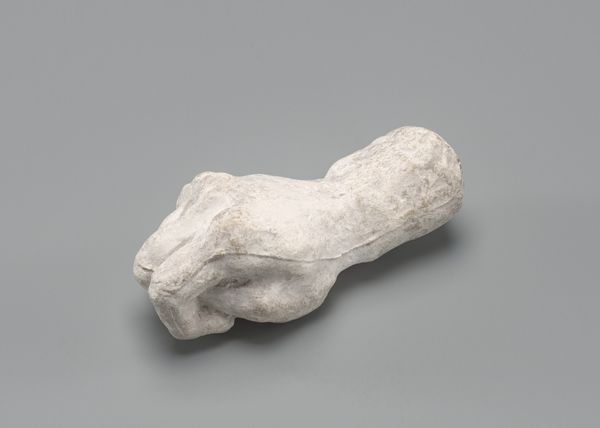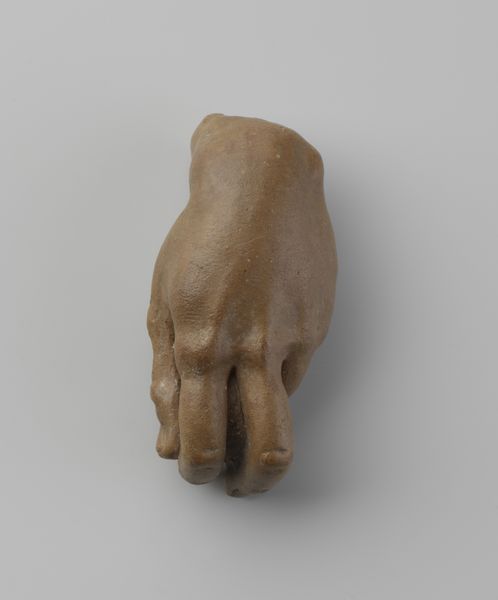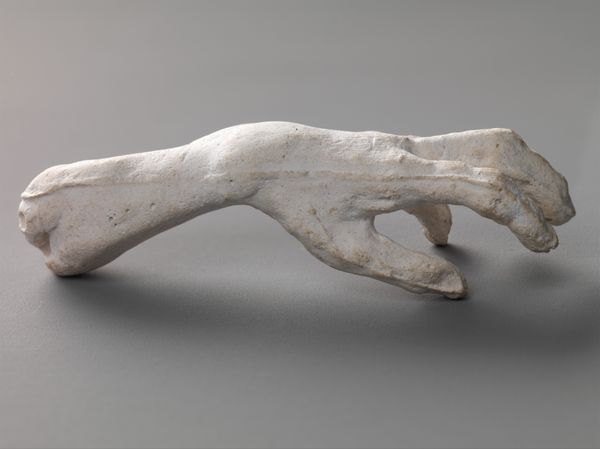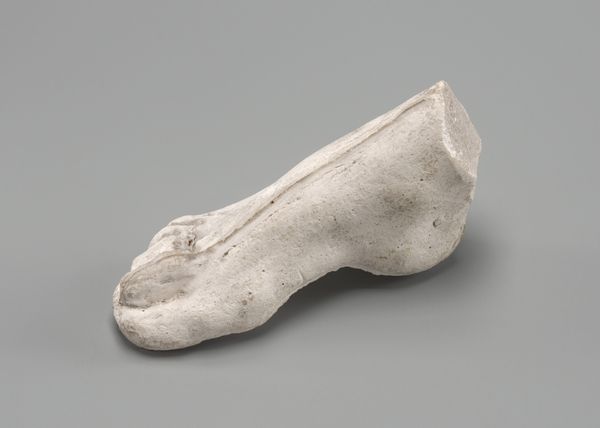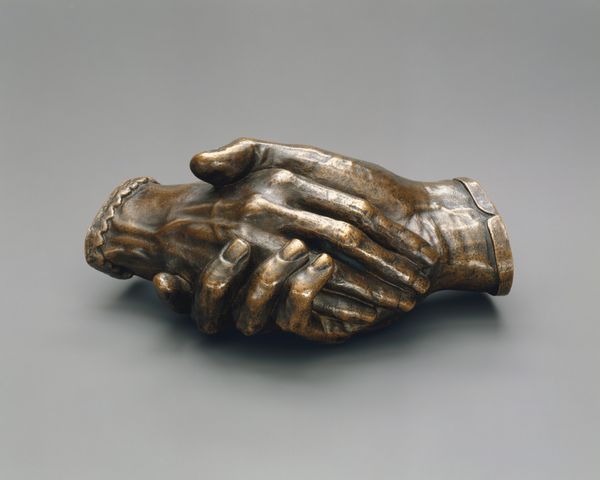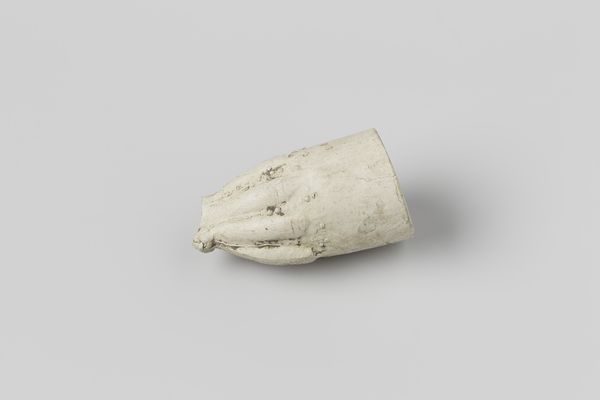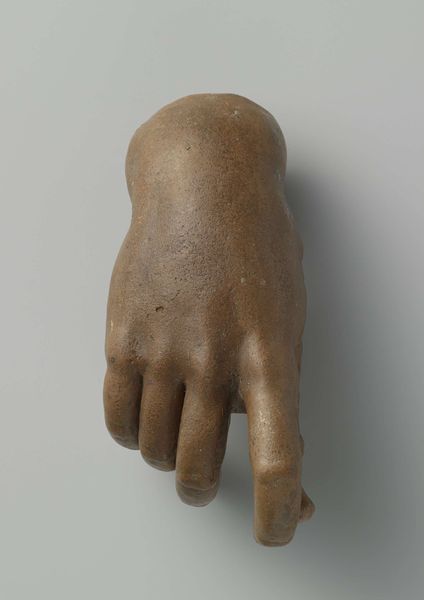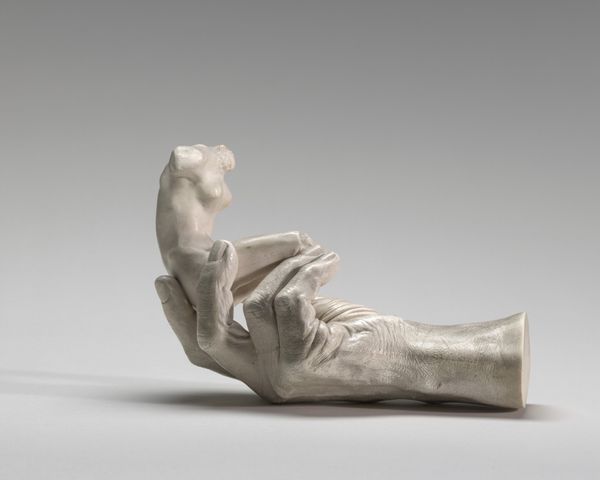
bronze, impasto, sculpture
#
portrait
#
classical-realism
#
bronze
#
figuration
#
impasto
#
sculpture
Dimensions: overall (greatest extension): 4.2 cm (1 5/8 in.)
Copyright: National Gallery of Art: CC0 1.0
Auguste Rodin made this plaster cast of a left hand, at an unknown date. Plaster, a humble material, allows for the direct reproduction of forms. Here, Rodin used it to capture the delicate contours and textures of the human hand. The matte, chalky surface of the plaster emphasizes the subtle details of the hand’s anatomy: the knuckles, tendons, and creases of the skin. This wasn't the final form of his art; Rodin relied heavily on assistants, and plaster allowed him to delegate the enlargement and transfer of his clay models into more durable materials like marble and bronze. The hand, a symbol of labor and creativity, takes on a particular resonance when rendered in this medium. Rodin’s choice of plaster, in this context, blurs the boundaries between the handmade and the mass-produced, raising questions about the nature of artistic creation and the role of labor in the production of art. Ultimately, it encourages us to consider the social and economic forces that shape our understanding of art and value.
Comments
No comments
Be the first to comment and join the conversation on the ultimate creative platform.
